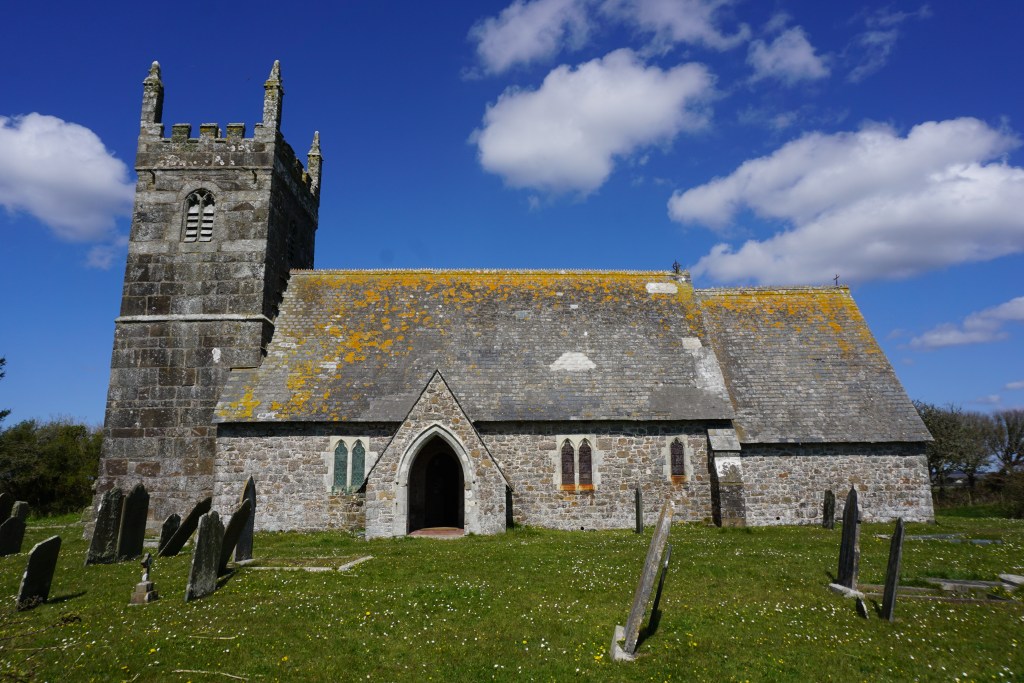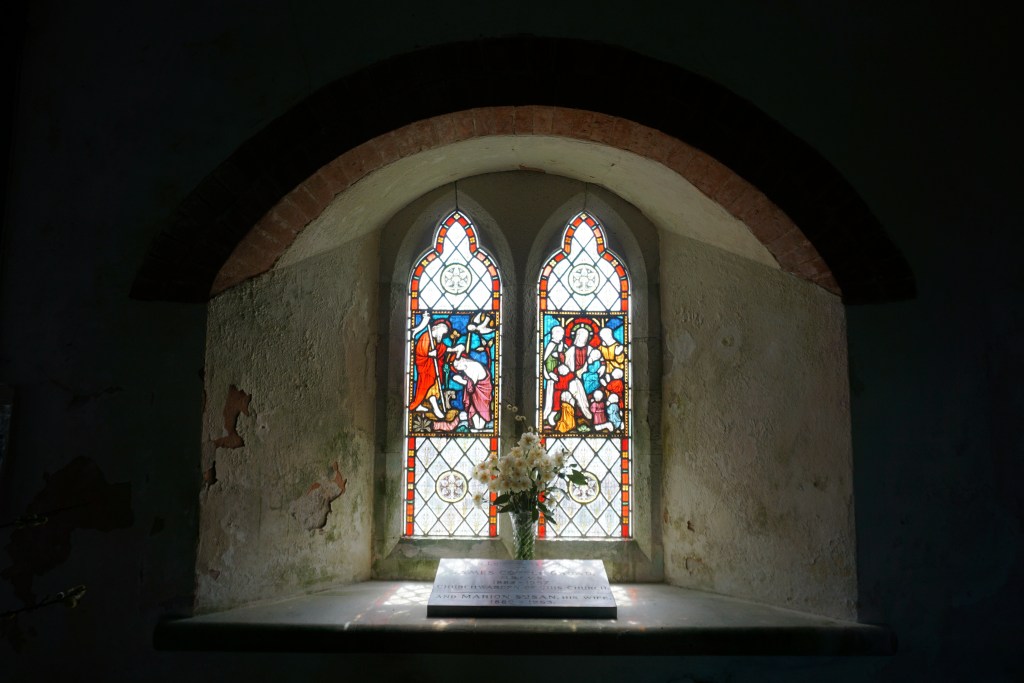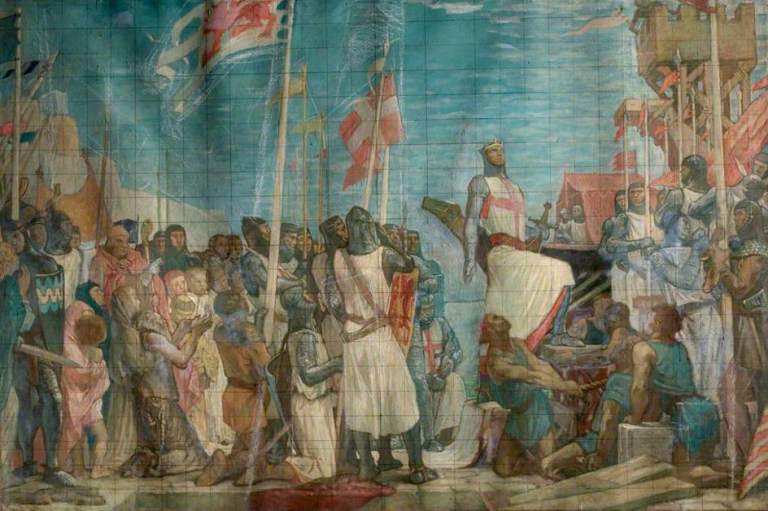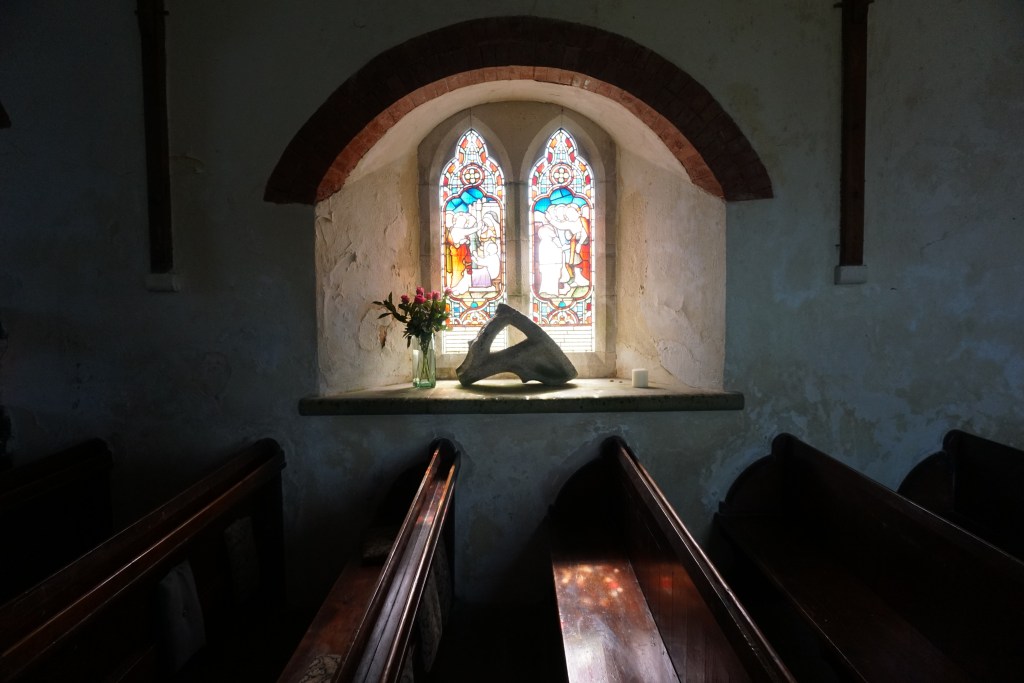The church of St Grada and the Holy Cross stands on high ground above Cadgwith Cove. Surrounded by fields with a view of the sea, it is a peaceful place that can only be reached on foot. Although it has been dedicated to Saint Grada since 1310, the church is thought to have had an earlier name and significance. Nearly 800 years ago, in 1261, the parish was called ‘St Cross’ because of a very special object said to have been kept within the walls of the church – a fragment of the True Cross brought to Cornwall by a Cornish crusader from the Holy Land.
“A 16th century version of a curious legend tells how a certain Sir Roger Wallysborough of Cornwall made a pilgrimage to the Holy Sepulchre, where he stole a piece of the True Cross.”
CORNISH CHURCH GUIDE, CHARLES HENDERSON, 1925


There are a few variations of this story, which is believed to have first appeared in an early Tudor commonplace book printed by John Coleyns, a London mercer and bibliophile. How exactly Wallysborough came to have a piece of the True Cross and how he managed to carry it back to Cornwall is shrouded in mystery but all agree that he gave the precious fragment to the church at Grade on the Lizard, and he may have even caused the first chapel to be built on the site in honour of the relic.
The third of the Christian Crusades, sometimes called the Kings’ Crusade, took place between 1189 and 1192 and is almost certainly the one which Wallysborough took part in. It is probably the most well-known of the crusades as most people are familiar with the story of Richard the Lionheart heading to the Holy Land to take on Saladin. In 1187 the city of Jerusalem had been taken by the great Kurdish general, Saladin, who was already Sultan of Egypt and Syria. During the attack Saladin is said to have captured a relic of the True Cross.
On hearing the news back in England, King Richard I gathered an army of his finest knights and along with King Philip II of France and Frederick I, Emperor of Rome, sailed to recapture the city. The Third Crusade became the stuff of romantic legend.
And it seems that at least one Cornish knight was amongst King Richard’s forces – Sir Roger Wallysborough.

” A number of crusading families returned [from the crusades] with holy relics, which they presented to their local churches and monastic foundations. A relic of the true cross, concealed on his body is said to have ensured the safe return of the Cornish crusader Sir Roger Wallysborough from the Third Crusade and he subsequently founded the church of the Holy Cross at Grade on the Lizard Peninsula.”
TALES OF THE CRUSADERS – REMEMBERING THE CRUSADES IN BRITAIN, ELIZABETH SIBERRY, 2021
How a piece of Christ’s True Cross came to be in Wallysborough’s possession is unclear, though most sources seem to imply that he stole it somehow, and by what means he was actually carrying it is equally confused. Some accounts claim that he was not just concealing the relic about his person in a pocket or a bag but that bizarrely he hid the fragment in his leg – presumably in a wound or beneath his skin.
” . . . there exists a report describing the theft of a piece of the cross by a Cornish knight named Sir Roger de Wallysborough, who managed marvellously to secrete the fragment in his thigh and transport it to Cornwall.”
THE CORNISH ORDINALIA, ROBERT LONGSWORTH, 2013

In the legend of Wallysborough’s return to Cornwall most sources record that he was sailing towards the Cornish coast when his ship was struck by a vicious storm. The knight prayed to the Almighty, promising that if he made it to shore alive he would give a fragment of the precious relic he carried to “the church of the parish in which he might come safely to land”. Wallysborough’s ship was wrecked but he miraculously survived and came ashore in Grade parish, where he either had a church built or, true to his word, gave a fragment of the True Cross to the priest there. (There is some suggestion that another fragment was given to St Buryan church too . . .)
It is believed that in the 4th century Helen, mother of the Emperor of Constantine, discovered the hiding place of three crosses – the True Cross, the one on which Christ is believed to have been crucified, and the crosses of the two thieves that died alongside him. Since that time fragments of this cross have become incredibly important and prized relics across the Christian world.
Indeed, so many churches claimed to have a piece that in the Middle Ages John Calvin commented:
“There is no abbey so poor as not to have a specimen. In some places there are large fragments, as at the Holy Chapel in Paris, at Poitiers, and at Rome, where a good-sized crucifix is said to have been made of it. In brief, if all the pieces that could be found were collected together, they would make a big ship-load. Yet the Gospel testifies that a single man was able to carry it.”
However, a document written in 1553 listing the possessions of the parish and church of St Grada and the Holy Cross gives us a huge clue as to the ‘truth’ of this Cornish legend. The inventory of church goods actually mentions the ‘Holy Cross’ being kept in a silver box or casket.

Learn more about the history of St Grada and the Holy Cross →
Credit: Elizabeth Dale – The Cornish Bird A Blog about Cornwall’s hidden places and untold stories.